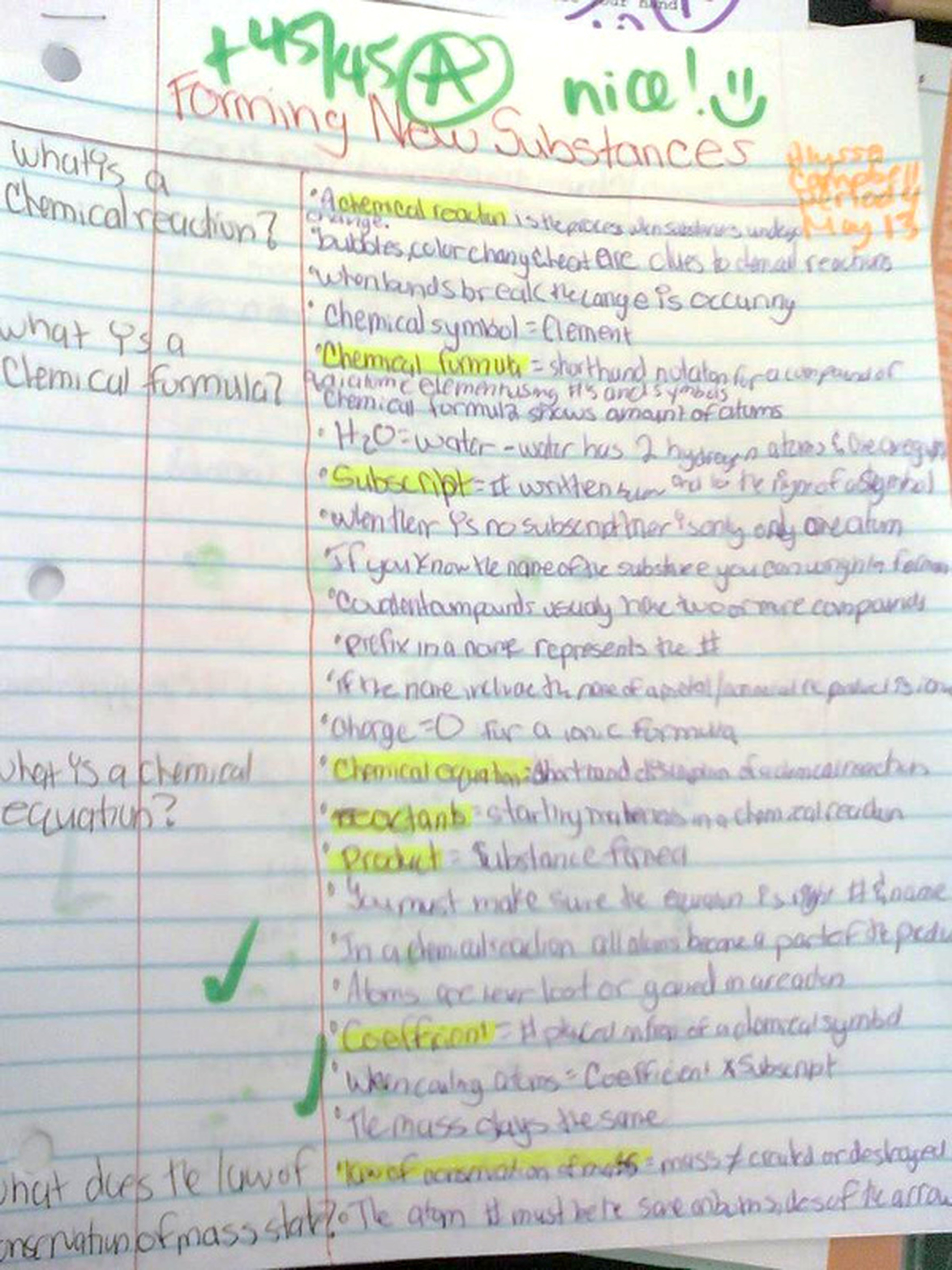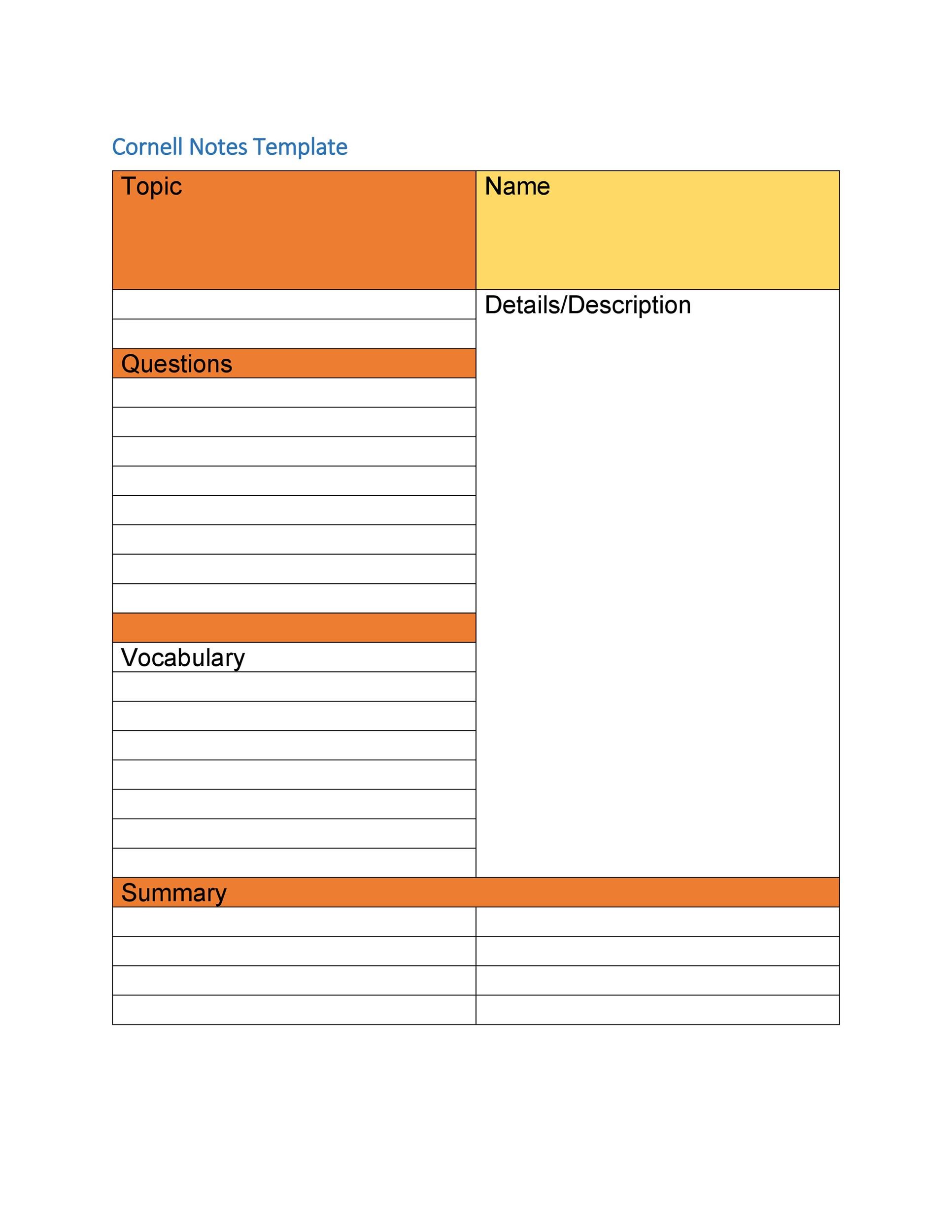
The student is encouraged to reflect on the material and review the notes regularly. When reviewing the material, the student can cover the note-taking (right) column while attempting to answer the questions/keywords in the keyword or cue (left) column. By studying a little bit each day or each week, you will have a greater success rate by retaining more information.

Ask yourself questions while studying: “Why is this material significant?” “How can I apply this to the real-world?” Take the time to study your Cornell Notes, take at least 10 minutes each week and go over your notes. It’s important to recite the information by covering the note-taking column (with a paper or folder, for example) and then looking at the questions or cue-words column, and saying the answers to the questions, ideas, or facts in your own words.

These notes can be taken from any source of information, such as fiction books, DVDs, lectures, textbooks, etc. To assist with future reviews, relevant questions (which should be recorded as soon as possible so that the lecture and questions will be fresh in the student’s mind) or keywords are written in the keyword column. Long sentences are avoided symbols or abbreviations are used instead. Notes from a lecture or teaching are written in the note-taking column notes usually consist of the main ideas of the text or lecture, and long ideas are paraphrased. The student should leave five to seven lines, or about two inches (5 cm), at the bottom of the page. The student divides the paper into two columns: the note-taking column (usually on the right) is twice the size of the questions/keyword column (on the left).
#Cornell notes how to#
How To Take Notes Through The Cornell Notes System into a format useful for reflection and study.īackground: According to Wikipedia, the system was developed in the 1950s by Walter Pauk, a Cornell University professor who shared the technique in his book “How to Study in College.”

Purpose: The purpose of Cornell Notes is to distill complex text, arguments, etc.


 0 kommentar(er)
0 kommentar(er)
